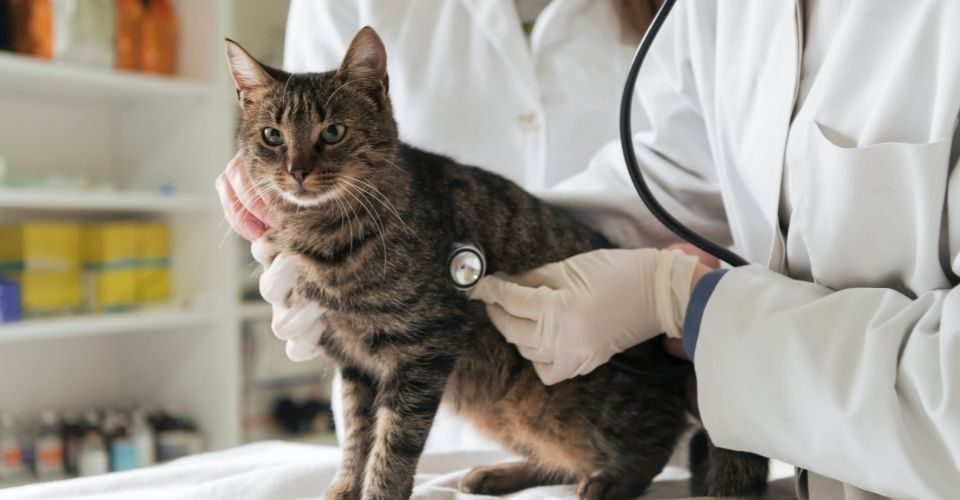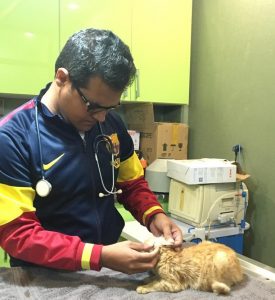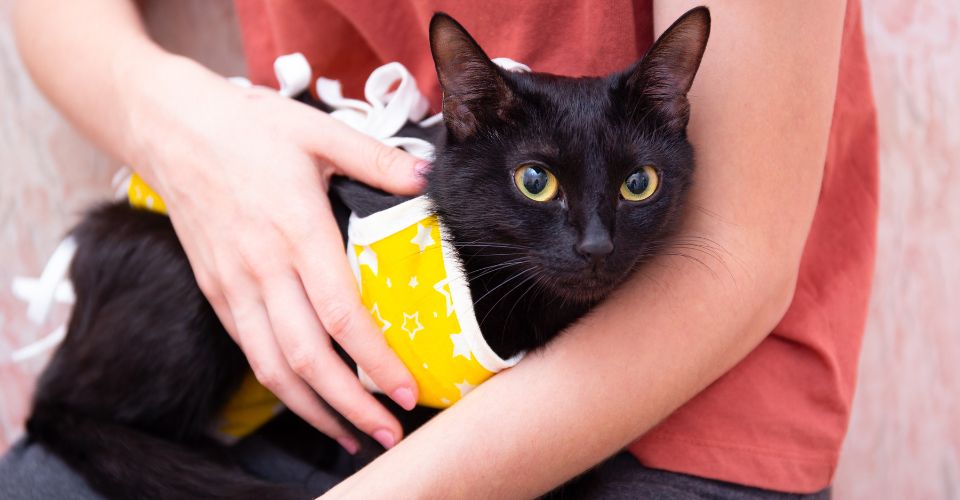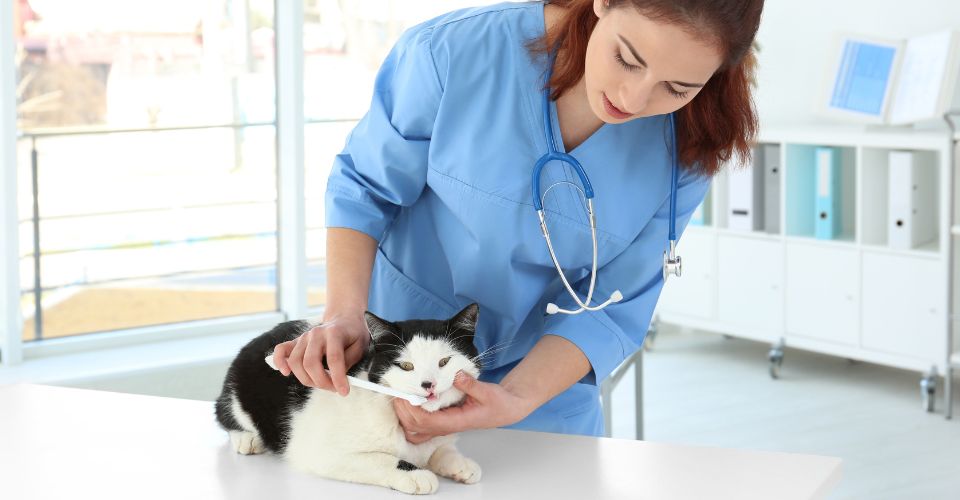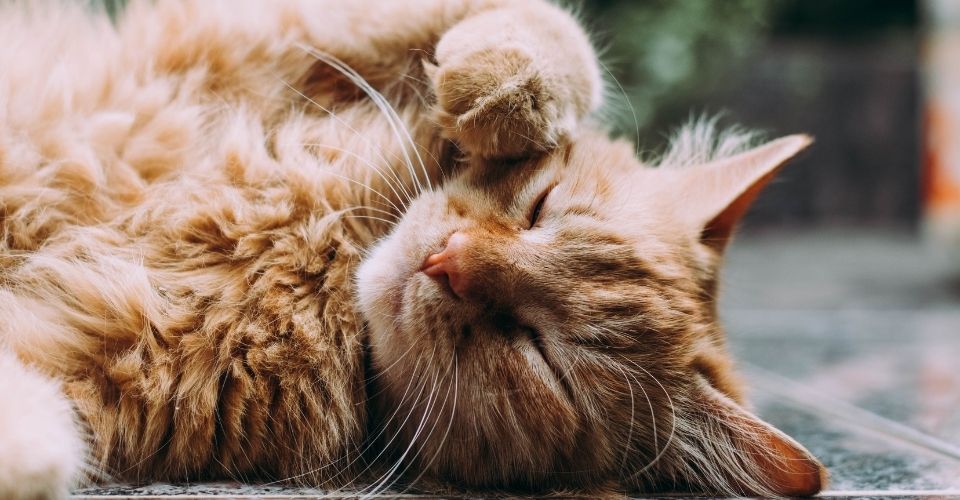“It hurts to pee,” “there’s blood in my pee” is no joke—it means that the person most probably has a urinary tract infection and needs to see a doctor immediately. Similarly, “cat straining to pee” or “cat peeing blood” is serious—there is something wrong with the cat. Most probably, it is a feline urinary tract infection (UTI). Urinary tract infection in cats is less common than urinary tract infection in dogs. But this does not mean that cats cannot develop UTI.
Just as UTI is painful and uncomfortable for humans, urinary tract infection in cats is also quite painful—often making cats cry out while peeing. On top of that, there is the development of litter box issues—cats with UTI pee frequently but in small amounts, often ending up peeing on their way to the litter box. If goes undiagnosed and untreated, it could get worse—leading to the development of kidney and bladder infections.
The pain of seeing your innocent feline friend in excruciating pain is unbearable. Therefore, it is advised that as a responsible cat parent, you familiarize yourself with the urinary tract infection in cats, its causes, symptoms, and home remedies. You should also know when it is time to take your cat with UTI to a vet. If you are really interested in learning about all this, keep on reading.
Urinary Tract Infection in Cats
There are many urinary tract problems that our feline friends suffer from. One such problem is the feline urinary tract infection. Cat with UTI is not only painful for cats but is also stressful for cat parents. But with vigilant care and home remedies, and of course a timely vet visit, you can help your cats recover from UTI. And then, with preventive care, you can help prevent the recurrence of urinary tract infections in cats.
Causes of Urinary Tract Infection in Cats
Usually, urinary tract infection in cats occurs when bacteria enter their urethra (the duct through which urine exit the body) and work their way up to the cat’s urinary bladder. The urine in the urinary bladder is supposed to be sterile, but when bacteria enter the bladder, they grow and multiply leading to the development of urinary tract infection in cats.
The most common organism to cause UTI in cats is Escherichia coli, but other microorganisms may also be the culprit of infecting your cat’s urinary tract. Escherichia coli bacteria are found in the feces.
This bacterium and other bacteria could enter a cat’s urethra if they are spending time in a dirty litterbox or an overall dirty and unsanitary environment.
How to Tell if Your Cat Has a UTI
Feline urinary tract infection is not as common in cats as other urinary tract issues, but it does not mean that cats never develop UTI. Cats do develop UTI, which may become quite painful for them if not treated timely. Therefore, it is advised that you always stay vigilant of the signs of sickness in cats.
Cat Urinary Tract Infection Symptoms
According to the Blue Cross Veterinary Hospital, as far as urinary tract infection in cats is concerned, you need to look out for the following signs of sickness.
Cat Straining to Pee
UTI in cats leads to inflammation, and cats often develop stones in the bladder, which block the urethra and make urination extremely difficult to pee.
Cat Peeing Small Amounts Frequently
This obstruction of the urethra makes it difficult and painful for cats to urinate. Therefore, cats try to pee more frequently as there is little to no pee passing the urethra. This inability to pee is not only frustrating and painful but is also very dangerous for our cats—they are unable to get rid of the waste products through urination.
Cat Peeing Outside Litter Box
Because of this condition, cats with UTI pee outside the box, almost everywhere. Cat not peeing in the litter box is a red flag that she might have a feline urinary tract infection. Cat urinating outside the litter box is not necessarily a sign of UTI in cats. Most cats usually develop litter box issues at some stage in their lives. But if your cat is using a litter box for defecating but not for urinating, you should get vigilant—looking for other symptoms of UTI in cats.
Painful Urination
Have you ever suffered from UTI? We hope not. It is painful—making big humans cry while peeing. Similarly, the process of urination gets extremely painful for cats with UTI, so painful that it often makes our little friends cry out and whine while peeing.
Cat Peeing Blood
Not all, but some cats with UTI may even have blood in their urine, which could be seen in the litter box or the place where she is lying. UTI in cats leading to blood in urine is more common in female cats. If you see blood in cat urine, you should immediately contact your vet and make an appointment.
Cat Licking Genitals
As discussed above, cats with UTI are in extreme pain. Therefore, a cat with UTI may lick at its genitals—trying to alleviate the discomfort.
Male Cat Urinary Tract Infection VS Female Cat Urinary Tract Infection
While both male and female cats are equally prone to developing urinary tract infections, male cats are more prone to urinary tract obstructions. This is because male cats have thinner urethras as compared to their female counterparts. The narrower urethra of male cats is easily blocked due to their shape and size. Even a small inflammation can make it difficult for male cats to pee.
Therefore, if your male cat is not peeing or facing difficulty urinating, you should immediately take her to the vet without wasting any time.
Are Some Cats More Susceptible to UTI?
Yes, some cats are predisposed to urinary tract infections.
Cats suffering from other urinary tract issues such as bladder stones are more prone to developing UTI and its recurrence. Therefore, if your cat has bladder stones, you should get them removed surgically or dissolved with medication and restore bladder health.
Similarly, senior cats—especially female cats—and diabetic cats are more susceptible to feline urinary tract infections.
Natural Home Remedies for Cat Urinary Tract Infection
Urinary tract infection in cats is very uncomfortable and, if left untreated, could lead to complete obstruction of the urethra and could even lead to rupturing of the bladder and failure of the kidney, which could be fatal. Therefore, you should be very careful and observant of your cat’s behavior. If she is showing the above-discussed signs of feline urinary tract infection, you should make a vet appointment, and until then, you could help her with the following home remedies for urinary tract infection in cats.
Cranberries for Cats UTI
Cranberries are famous for being a good treatment for UTI in humans but can cranberries alleviate the pains of urinary tract infection in cats?
Fortunately, yes. Cranberries are acidic, and therefore, help lower the pH of a cat’s urine which is not only good treatment for UTI but also stops the recurrence of UTI in cats.
Instead of giving your cat cranberry juice, it is advised that you add some powdered cranberry pills to their food as juice would be loaded with sugar.
Be careful while giving cranberry to your cat. You should always check the pH of your cat’s urine before giving her cranberries. Only give them if they have UTI, and their urine is alkaline. Otherwise, acidic cranberries would exacerbate the situation.
Apple Cider Vinegar for Cat UTI
Just like cranberries, apple cider vinegar can also help lower the pH of the alkaline urine of cats with UTI. ACV is quite bitter in taste, and cats may refuse to ingest it, therefore, try adding it to chicken or beef broth.
As with cranberries, you should check your cat’s urine pH before giving it to them. You can use a pH testing device to check the pH of your cat’s urine.
Coconut Oil for Cat Urinary Tract Infection
There is not much research on the effectiveness of coconut oil for urinary tract infections in cats. But coconut oil does have numerous benefits for our feline friends. While it might not clear the UTI right away, it will help alleviate the pains associated with UTI in cats. However, you should keep in mind that APSCA has listed it as people’s food to avoid feeding your pets.
Chondroitin and Glucosamine for Cats
Glucosamine and Chondroitin are not only used for pain management for arthritis, but can also help felines with UTI. These two compounds help cats rebuild the bladder wall—preventing further damage. Where glucosamine helps replace a compound in the lining of the urinary bladder, chondroitin helps prevent the breakdown of this compound. These two supplements also help to alleviate other symptoms of UTI in cats.
According to WebMD, you should give 50mg of chondroitin and 10omg of glucosamine to your cat for every 10 pounds.
Marshmallow Root for Cats UTI
Marshmallow root helps feline in their fight against UTI by killing causative bacteria, reducing inflammation, and strengthening the lining of cats’ urinary bladders. It also helps the cat with the obstruction of the urethra. It helps cat kidneys flush out urine, thereby increasing and easing the urine flow.
Bone Broth for Cats Uti
Where lowering of pH and strengthening of the linings of the urinary bladder is helpful, cats also need to stay hydrated to push back UTI. If the cat seems not to be interested in water, you can give her fluids like bone broth, which will not only help her stay hydrated but would also provide necessary nutrients and minerals. Amino acids (i.e. glycine and arginine) present in bone broth helps in the reduction of inflammation.
When Should I Take My Cat to the Vet for UTI
If your cat has been showing mild symptoms of UTI. You can try these at-home remedies for UTI in cats after discussing it with your vet, but if your cat seems not to be getting any better or UTI has become pretty serious, your cat will need some professional help.
If your cat is crying out with pain while peeing and no remedy seems to be working, you should take her to the vet without wasting any more time, as this probably is ureteral obstruction, which could be fatal.
Cat Urinary Tract Infection Treatment
The vet will suggest the best course of treatment for your feline friend. Depending on the signs exhibited by your cat, the vet may perform a urinalysis. If the vet suspects a urinary tract infection in your cat, the vet will prescribe a common antibiotic to ease your kitty’s pain, even before getting the results of urinalysis from the lab.
If the culprit is some bacteria, the vet will prescribe the specific cat urinary tract infection antibiotics. You will have to give it to your cat as instructed by the vet. Otherwise, you will only be killing some bacteria, leaving others to grow and multiply. Only your vet could tell how long you will have to give antibiotics to your cat.
Never leave the antibiotic treatment in the middle, even if your cat seems to be perfectly fine—not showing any signs of UTI. Unfinished antibiotic rounds give bacteria a chance to return with more strength, developing antibiotic resistance.
Why Does My Cat Keep Getting UTI?
If your cat has developed a feline urinary tract infection, there is a good chance that UTI will recur. Urinary tract infection in cats is painful and uncomfortable. Therefore, if your cat keeps getting UTI, you need to do something about it.
One of the main reasons underlying the recurrence of UTI in cats is the unfinished round of antibiotics. This not only leaves some bacteria alive to grow and reproduce but also leads to the development of antibiotic resistance.
Cat Uti Prevention
If your cat keeps getting UTI and you are stressed about seeing your cat in pain, here are some recommendations for preventing urinary tract infection in cats.
- Keep your cat hydrated: make sure that your cat is drinking ample water. If she is not interested in the water, maybe you can lure her by adding some tuna juice to your cat’s water bowl. Or maybe you can try a cat water fountain.
- Adjusting your cat diet: To begin with, to make sure that your cat is taking enough fluids, you should switch from dry cat food to wet cat food. Secondly, instead of feeding one or two big meals, you should feed your cat small meals frequently. Make sure that your cat is not overweight. Thirdly, discuss it with your vet if she needs a UTI cat food—cat food for cats with UTI.
- Improving litterbox hygiene: Always keep your cats’ litterbox trays clean. Make sure that litter boxes are easily accessible. Maybe you can provide more than one litterbox so that if one is dirty, your cat may use the other one.
- Keep your cat calm: Stress is a major factor, increasing the risk of UTI in cats. Therefore, you are advised to keep your cat calm. If she is uncomfortable around strangers, make sure that you put her in a separate room when guests are coming. Moreover, try not to make major changes in the house, especially in your ‘cat’s territory.’
- Never miss a vet visit: Cats are stoic creatures, they do not show their signs of sickness until it gets near impossible to hide. Therefore, you should never miss a vet visit as it would rule out the possibility of your cat developing any serious illness. Similarly, if your cat is acting differently—showing the above-mentioned signs of urinary tract infection in cats—you should discuss it with your vet and practice cat urinary tract infection home remedies. And if things don’t get better, you should take her to the vet.

